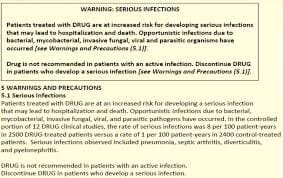|
Getting your Trinity Audio player ready... |
Black box warnings: What to know
Understanding Black Box Warnings: A Crucial Guide
Black box warnings, also known as boxed warnings, represent the most serious level of caution that the U.S. Food and Drug Administration (FDA) can issue for a medication. These warnings are intended to highlight the potential for life-threatening or severe adverse effects associated with certain drugs, providing healthcare providers and prescribers with essential information to make informed decisions about their use. When a drug receives a black box warning, it indicates that the risks of using the drug may outweigh its benefits under certain circumstances, and prescribers must exercise caution, monitoring, or avoid prescribing the drug for certain patient populations.
The impact of a black box warning can be profound, often leading to changes in prescribing practices. For instance, when atypical antipsychotics received a black box warning for increased mortality in elderly patients with dementia, the prescription rates for these medications in this population significantly decreased. Similarly, when the diabetes medication rosiglitazone was assigned a black box warning due to cardiovascular risks, its use dropped substantially. In this article, we have compiled a list of some critical black box warnings that healthcare providers, particularly prescribers and pharmacists, must be aware of. Please note that this list is not exhaustive but highlights some of the most notable drugs that carry black box warnings.
List of Black Box Warnings
1. Antipsychotics
Examples: Quetiapine, Haloperidol, Olanzapine, Risperidone Warning: These medications carry a black box warning due to an increased risk of mortality in older patients with dementia-related psychosis. The FDA highlights that the use of antipsychotics in elderly patients with dementia-related psychosis has been associated with an increased risk of death, primarily due to cardiovascular or infectious causes. As a result, the prescribing of these drugs in this population has declined.
2. Atypical Antipsychotic
Example: Clozapine Warning: Clozapine carries a warning for agranulocytosis, a potentially life-threatening condition where the bone marrow fails to produce enough white blood cells, leading to severe infections. Regular monitoring of blood counts is essential for patients on this medication to prevent this adverse effect.
3. Fluoroquinolones
Examples: Ciprofloxacin, Moxifloxacin, Levofloxacin Warning: Fluoroquinolones are associated with an increased risk of tendon rupture or damage, particularly in elderly patients and those using corticosteroids. The FDA warns that these antibiotics should be prescribed with caution due to the risk of musculoskeletal injuries.
4. Selective Serotonin Reuptake Inhibitors (SSRIs)
Examples: Paroxetine, Fluoxetine, Sertraline, Fluvoxamine, Escitalopram Warning: SSRIs carry a black box warning for an increased risk of suicidal thoughts and behavior, particularly in children, adolescents, and young adults. This risk is not unique to SSRIs and extends to other antidepressants such as serotonin-norepinephrine reuptake inhibitors (SNRIs). Close monitoring is recommended during the initial stages of treatment.
5. Antiarrhythmic
Example: Amiodarone Warning: Amiodarone, a medication used to treat arrhythmias, has a black box warning for pulmonary toxicity, hepatotoxicity, and heart block. The FDA emphasizes that patients taking amiodarone should be closely monitored for these potentially life-threatening effects.
6. Antimalarials
Example: Mefloquine Warning: Mefloquine is associated with neuropsychiatric effects, including anxiety, depression, seizures, hallucinations, and loss of balance. These adverse effects can be particularly concerning for individuals with a history of psychiatric disorders, and the FDA recommends considering alternatives for these patients.
7. Monoclonal Antibody
Example: Natalizumab Warning: Natalizumab carries a black box warning for an increased risk of progressive multifocal leukoencephalopathy (PML), a rare but serious brain infection caused by the JC virus. This risk is higher in patients with compromised immune systems.
8. Progestins
Example: Medroxyprogesterone Warning: Medroxyprogesterone, a form of hormonal contraception, carries a warning for reduced bone density, particularly in premenopausal women. Although this effect is reversible upon discontinuation of the medication, it remains a concern, especially with long-term use.
9. Fatty Acids
Example: Valproic Acid Warning: Valproic acid is associated with hepatotoxicity and pancreatitis, both of which can be life-threatening. The FDA recommends close monitoring of liver function and pancreatic health during treatment.
10. Opioids
Examples: Oxycodone, Morphine, Hydrocodone, Fentanyl Warning: Opioids carry a black box warning for the risk of addiction, misuse, and abuse, which can lead to life-threatening respiratory depression and overdose. The widespread opioid crisis has prompted the FDA to issue these warnings, emphasizing the need for careful prescribing practices.
11. Long-Acting Beta-2 Agonists
Examples: Formoterol, Salmeterol Warning: Long-acting beta-2 agonists, used primarily in asthma and chronic obstructive pulmonary disease (COPD), carry a warning for increased risk of asthma-related death. The FDA advises that these medications should always be used in combination with an inhaled corticosteroid.
12. Sodium Blockers
Examples: Carbamazepine, Lamotrigine Warning: Sodium blockers like carbamazepine and lamotrigine are associated with life-threatening skin reactions, including Stevens-Johnson syndrome, DRESS syndrome, and toxic epidermal necrolysis (TEN). The FDA stresses the importance of monitoring for early signs of these skin reactions.
13. Direct Thrombin Inhibitor
Example: Dabigatran Warning: Dabigatran carries a warning for the risk of blood clot formation if the drug is administered to patients with a spinal/epidural catheter or after a spinal puncture. This can result in permanent paralysis if not carefully managed.
14. Xanthine Oxidase Inhibitor
Example: Febuxostat Warning: Febuxostat, used to treat gout, is associated with an increased risk of serious cardiovascular events, including heart attack and stroke. The FDA recommends using caution, particularly in patients with a history of cardiovascular disease.
15. Tyrosine Kinase Inhibitors
Example: Nilotinib Warning: Nilotinib has a black box warning for increased risk of QT prolongation, which can lead to life-threatening arrhythmias.
16. Thiazolidinediones
Example: Pioglitazone Warning: Pioglitazone, used for type 2 diabetes, carries a warning for an increased risk of heart failure. The FDA advises that this medication should not be used in patients with existing heart failure.
17. Tetracyclines
Example: Tigecycline Warning: Tigecycline, an antibiotic used for serious infections, is associated with an increased risk of death, particularly when used intravenously for conditions like ventilator-associated pneumonia and complicated intra-abdominal infections.
18. IBS Medicine
Example: Linaclotide Warning: Linaclotide, a medication for irritable bowel syndrome (IBS), carries a warning for an increased risk of severe dehydration in children under 6 years and recommends avoiding its use in children aged 6 to 18.
19. Tyrosine Kinase Inhibitor
Example: Cabozantinib Warning: Cabozantinib is associated with holes forming in the gastrointestinal (GI) tract and an increased risk of GI fistulas, both of which are severe complications that require immediate attention.
Conclusion
Black box warnings serve as critical tools for safeguarding patient health by alerting healthcare providers to drugs that may pose significant risks. These warnings help clinicians make informed decisions about treatment options, prioritize patient safety, and reduce the potential for harm. Prescribers and pharmacists must remain vigilant in understanding and communicating the risks associated with medications that carry black box warnings, ensuring that they are used appropriately and with careful monitoring.








Leave a Reply